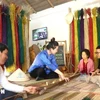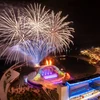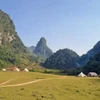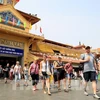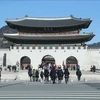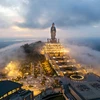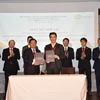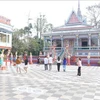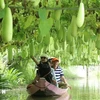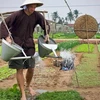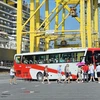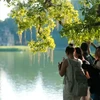It has been five years since Hanoi expanded its administrative border. The capital city’s tourism sector has enjoyed positive changes as it knows how to make full use of tourism advantages to attract more visitors, both domestic and international.
The number of foreign tourists coming to Hanoi jumped from 1.2 million in 2008 to 2.1 million in 2012, while the number of domestic tourists grew from 7 million to 12.3 million.
In the first half of this year, despite a fall in the number of visitors to Vietnam due to economic difficulties, Hanoi still welcomed more than one million foreign arrivals, a year-on-year rise of 15 percent, and 7.3 million domestic visitors, up 8 percent.
Last year, Hanoi was listed the sixth most attractive destination in Asia by Smart Travel Asia, the region’s leading online travel magazine, and second in a list of 100 international cities with good hotel services by the well-known tourism website Trivago. Recently, the city also entered TripAdvisor’s Top 25 Destinations in Asia, the world’s largest travel website.
The achievements are attributable to Hanoi’s efforts to exploit the tourism potential of the expanded area. Besides renowned destinations like President Ho Chi Minh Mausoleum, Van Mieu (Temple of Literature), Thang Long Citadel, Hoan Kiem lake and ancient streets, Hanoi has paid more attention to developing other tourism sites, including Tan Da mountain in Ba Vi district, Duong Lam old village in Son Tay district and Van Phuc silk village in Ha Dong district.
The city has implemented measures to ensure tourists’ safety and invested in upgrading Hanoi’s traditional destinations, as well as improving the quality of tourism products and services.
Hanoi has actively promoted its image to visitors through tourism promotion programmes held not only in Vietnam but also in foreign countries like Russia, the US and the Republic of Korea.
In 2008, the entire Ha Tay province, Me Linh district of Vinh Phuc province and four communes of Hoa Binh province’s Luong Son district were incorporated into Hanoi, making it the 17th largest capital city in the world with a total area of more than 3,300 sq km.-VNA
The number of foreign tourists coming to Hanoi jumped from 1.2 million in 2008 to 2.1 million in 2012, while the number of domestic tourists grew from 7 million to 12.3 million.
In the first half of this year, despite a fall in the number of visitors to Vietnam due to economic difficulties, Hanoi still welcomed more than one million foreign arrivals, a year-on-year rise of 15 percent, and 7.3 million domestic visitors, up 8 percent.
Last year, Hanoi was listed the sixth most attractive destination in Asia by Smart Travel Asia, the region’s leading online travel magazine, and second in a list of 100 international cities with good hotel services by the well-known tourism website Trivago. Recently, the city also entered TripAdvisor’s Top 25 Destinations in Asia, the world’s largest travel website.
The achievements are attributable to Hanoi’s efforts to exploit the tourism potential of the expanded area. Besides renowned destinations like President Ho Chi Minh Mausoleum, Van Mieu (Temple of Literature), Thang Long Citadel, Hoan Kiem lake and ancient streets, Hanoi has paid more attention to developing other tourism sites, including Tan Da mountain in Ba Vi district, Duong Lam old village in Son Tay district and Van Phuc silk village in Ha Dong district.
The city has implemented measures to ensure tourists’ safety and invested in upgrading Hanoi’s traditional destinations, as well as improving the quality of tourism products and services.
Hanoi has actively promoted its image to visitors through tourism promotion programmes held not only in Vietnam but also in foreign countries like Russia, the US and the Republic of Korea.
In 2008, the entire Ha Tay province, Me Linh district of Vinh Phuc province and four communes of Hoa Binh province’s Luong Son district were incorporated into Hanoi, making it the 17th largest capital city in the world with a total area of more than 3,300 sq km.-VNA
